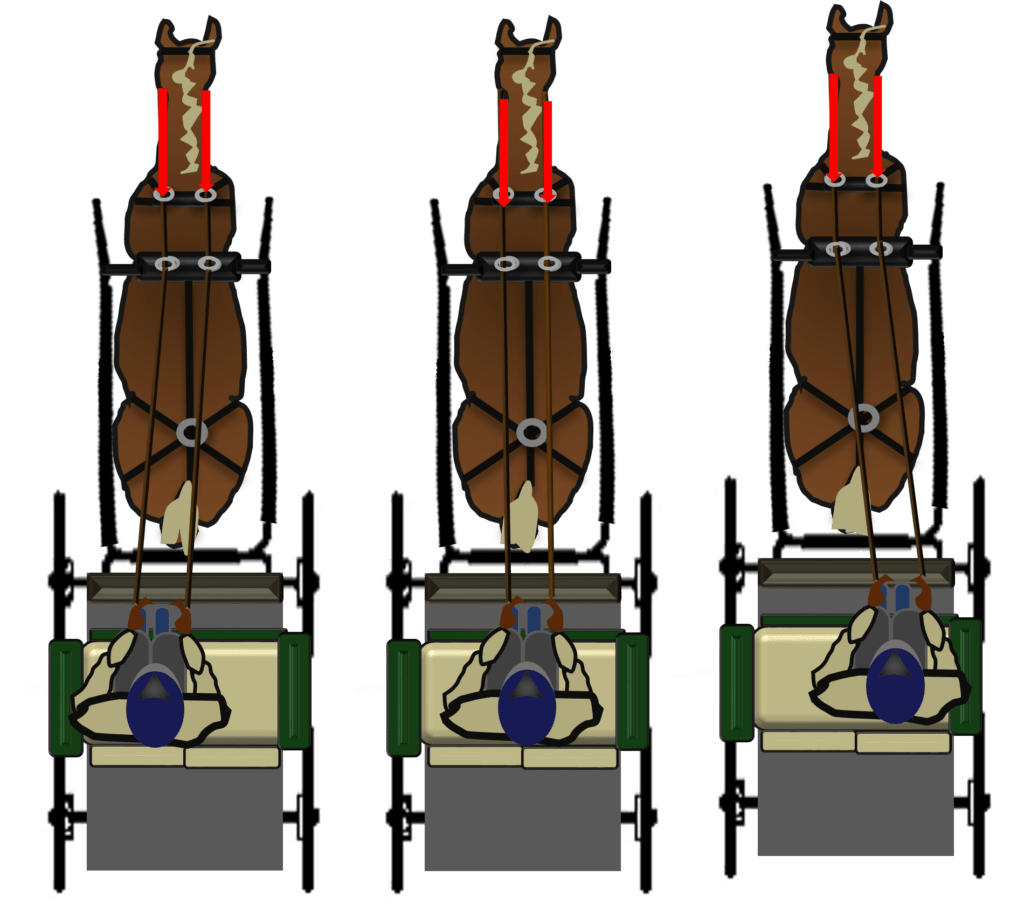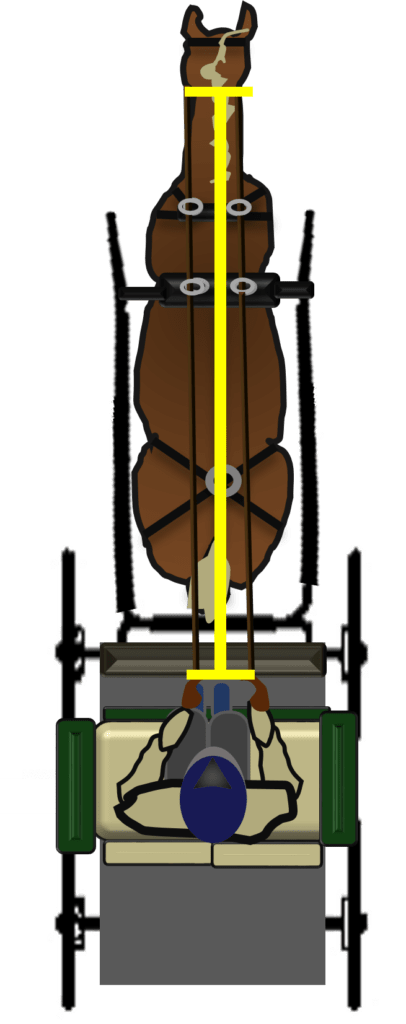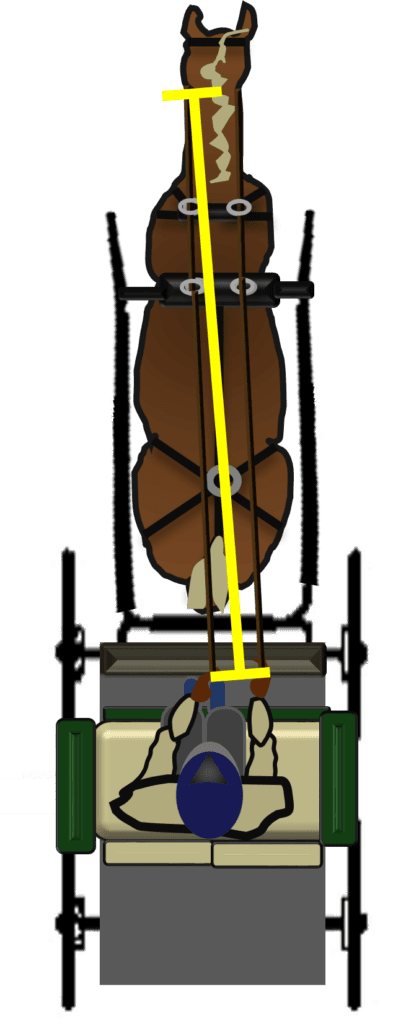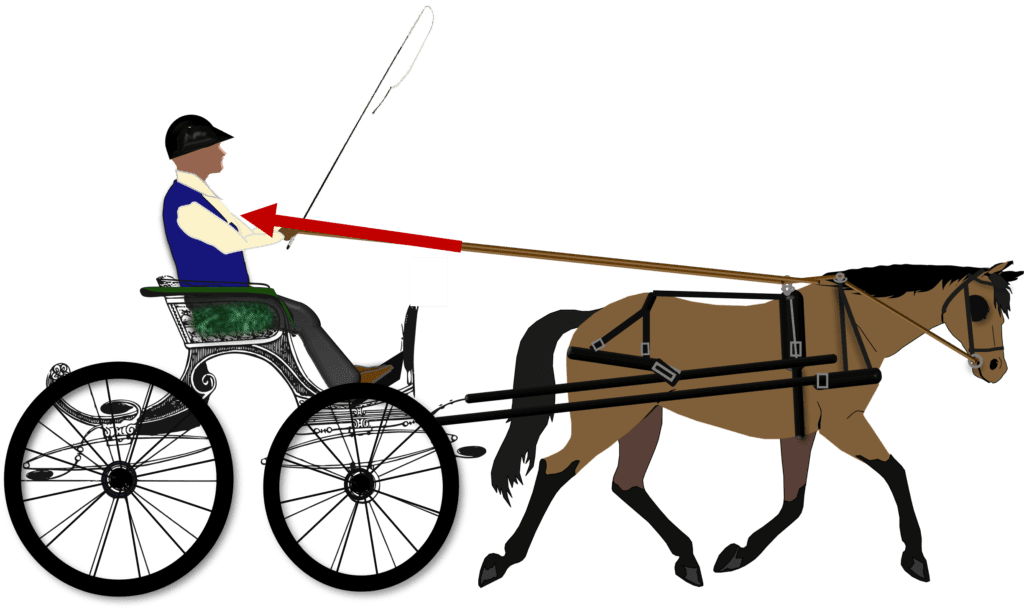Back to: Hitching Up
Lines Of Communication
The line of draft (pull) on the bit is restricted by the terrets on the harness. Those terrets are located on the saddle and the collar of the harness and usually have an inside diameter of no more than one inch.
No matter where the rein is pulled from behind the terrets, the rein will pull the bit towards the center of the terret.
The bit is a direct rein between the surcingle and bit.
We can effectively drive from the left, center, or from the right side of the carriage without any change in the communication to the bit.

As you move your hands left or right you affect the amount of draw that is put on the reins. Moving the hands to the left or right changes the distance from the hand to the bit unevenly. That means a move left or right creates a deviation of the contact.
Example

If a single horse with a driver is seated in the middle of the carriage;
- the distance from the driver’s hand to the right side of the bit is the same as the distance to the left side of the bit.
If the reins are held evenly in the driver’s hand and moved to the right;
- the distance from the left side of the bit to the hand is increased,
- as the distance from the right side of the bit to the hand is diminished.

The end result will be that the bit; is pulled by the left rein, and released by the right rein. Conclusion; the more you move your hands to the right, the more you will tilt the bit left.
Isolating Communication
Since the draft of the rein is only perceived by the horse as a pull toward the terrets we must find the line that most efficiently and effectively moves the bit upon that line. If we draw a line directly from the saddle terret directly to the center of your breast bone.

No matter where you are seated, this is the most effective line for the reins to move upon.
For every centimeter the hand & rein is moved toward your chest, the bit is moved nearly the exact same amount.
This is true whether seated to the left, right, center, at the same height as the saddle, or from well above in a high carriage.
Keeping The Connection
The hands must travel toward and away from the saddle to accommodate changes in the horse’s frame and changes in momentum. The mechanisms that allow that travel are, the shoulder joints and elbow joints.
The amount of travel will be different with each horse, carriage, and situation. As the horse is asked to; move forward, stretch the frame, or pull into a hill, the hands must travel forward to allow the horse to do the work at hand while maintaining contact on the bit.
When the horse is asked to slow, collect or hold the carriage back going downhill, the hand must recoil towards the body to maintain the connection with the bit.
Conclusion
Lifting the reins, that you want to activate leads to better and more refined communication on the reins and use of the bit with a more sympathetic hand.